What Is Oxford Fabric: Simple Guide To Features, Uses And Care
What makes Oxford fabric a timeless staple in wardrobes and beyond? If you’re asking “What is Oxford Fabric,” this guide explains its enduring appeal. Discover the unique basket weave that gives it strength and texture, explore its breathable nature, different variations like Pinpoint and Royal, and its wide-ranging uses from classic shirts to sturdy bags, along with simple care advice.
1. What is oxford fabric?
1.1. Simple definition of Oxford fabric
Oxford fabric is a type of cloth, a woven material. Imagine threads woven together in a special way to make a strong and reliable fabric. It’s known for being durable (long-lasting). It often has a slightly bumpy or textured surface, not perfectly smooth.
Traditionally, Oxford fabric was made from cotton, but today it can also be made from blends of fibers, which we’ll explore later. So, Oxford fabric is a strong, woven cloth, often with a cotton base, and a distinct textured feel.
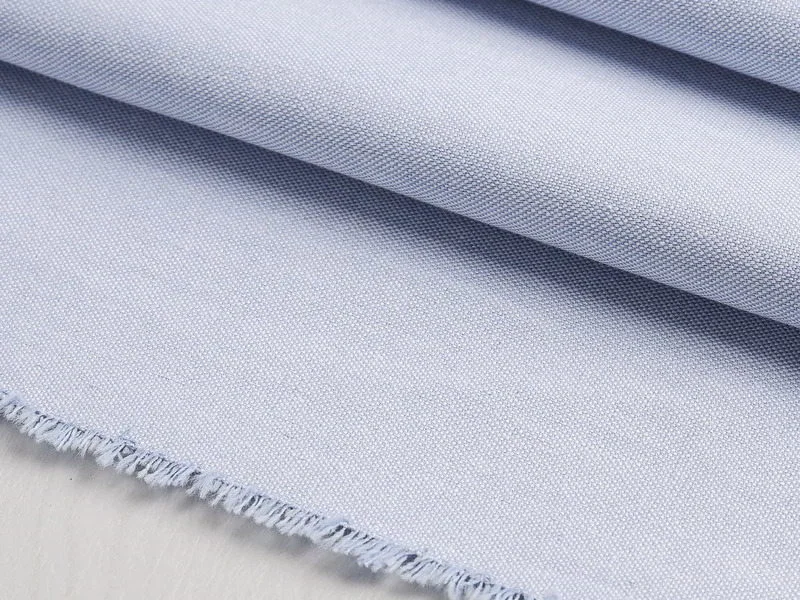
1.2. Why it’s a popular choice for many items?
People and brands choose Oxford fabric for good reasons. It’s strong and lasts a long time. When made with cotton, it’s comfortable to wear. Plus, it has a classic, smart-casual look that many people like. It’s a reliable fabric that looks good for many uses, making it very versatile.
1.3. What you will learn in this guide?
This guide will explain everything important about Oxford fabric in an easy way, for everyone. We will cover:
- What Oxford fabric is made from.
- How it’s made, focusing on its special weave.
- Its main features, like its strength and feel.
- The different types of Oxford fabric you might find.
- Common items made from this fabric.
- Simple tips on how to take care of your Oxford fabric items.
We’ll use simple language, avoiding complicated terms, so you can understand this wonderful fabric better.
2. Key features of oxford fabric
Oxford fabric isn’t just any cloth; it has some unique qualities that make it stand out. These features come from how it’s made and the materials used.
2.1. Durability: built to last
Oxford fabric is known for being very strong. It doesn’t rip or wear out easily. This strength comes from its unique basket weave pattern (we’ll explain this weave more soon). This weave locks the threads together tightly.
This means it can handle lots of wear and tear, and frequent washing. Think about school uniforms or work shirts that are worn and washed almost every day. Oxford fabric is great for these because it lasts. It’s a fabric you can rely on for a long time.
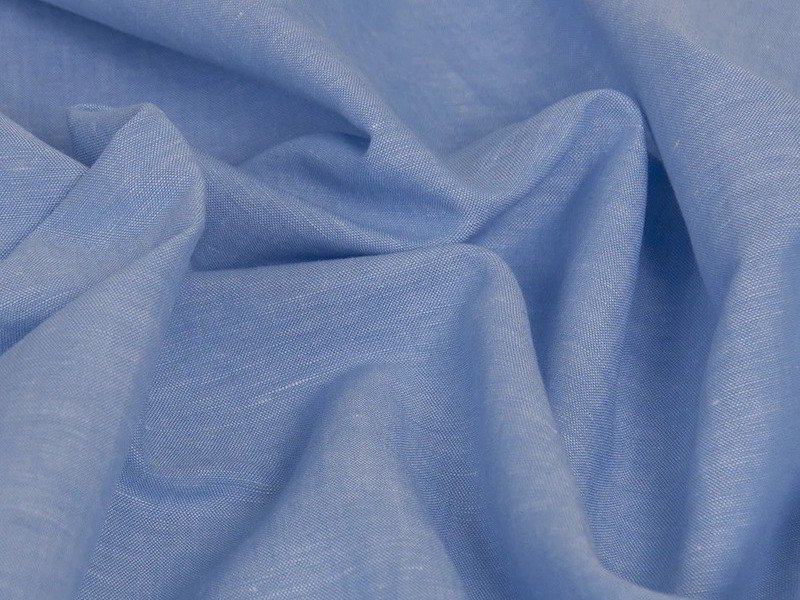
2.2. Texture: a unique touch
When you touch Oxford fabric, it often has a slightly rougher or more “bumpy” feel. It’s not super smooth like silk or some fine cottons. This texture is a direct result of the basket weave pattern, where the threads interlace in a visible way. This texture gives it a classic, somewhat substantial, and often slightly casual look. It looks and feels robust, adding to its character.
2.3. Breathability: keeping cool
Oxford fabric, particularly when made from 100% cotton, allows air to pass through it easily. This helps your skin breathe, making you feel cooler and more comfortable. This is especially nice in warm weather or if you’re active.
It doesn’t trap heat and moisture as much as some fully synthetic fabrics might. So, yes, cotton Oxford fabric is breathable and comfortable, helping to prevent you from feeling too sweaty.
2.4. Appearance: often a two-tone look
Sometimes, Oxford fabric has a subtle two-tone or heathered effect. This happens when one set of threads, for example, the warp threads (threads going lengthwise in the fabric), is colored, and the other set, the weft threads (threads going widthwise), is white.
This interweaving of colored and white threads gives the fabric a richer, more dimensional look, rather than a flat, solid color. Not all Oxford fabric has this, but it’s a common and distinctive feature, especially in classic shirts. Many Oxford fabrics, however, are a solid color.
2.5. Material composition: what’s it made of?
Classic Oxford fabric is most commonly made from 100% cotton. Cotton is a natural fiber that contributes to the fabric’s softness (which often improves with washing), breathability, and overall comfort.
Sometimes, Oxford fabric can be a blend of cotton and other fibers like polyester or elastane. Polyester can add wrinkle resistance and extra durability, while elastane (like Spandex) can add a bit of stretch for more comfort and movement.
3. Oxford fabric: the basket weave explained
The way Oxford fabric gets its special characteristics, like its strength and texture, is all down to how it’s woven.
3.1. Understanding fabric weaves: a very quick look
“Weaving” is the basic process of making most fabrics. It’s how two sets of threads are interlaced – the warp (threads running up and down, lengthwise) and the weft (threads running side to side, crosswise) – to create a sheet of fabric. Imagine making a simple placemat by weaving strips of paper over and under each other.
Fabric weaving is similar, but with threads on a machine called a loom. The way these threads are interlaced is called the “weave structure,” and there are many different patterns. These patterns determine the fabric’s properties like strength, texture, how it hangs, and its appearance.
3.2. The basket weave: Oxford’s signature
Oxford fabric uses a specific type of weave called a basket weave. In this weave, typically two (or more) warp threads are grouped together and pass over and under two (or more) weft threads, which are also grouped together. For example, two warp threads might go over two weft threads, then under the next two weft threads, and so on.
This creates a symmetrical, checkerboard-like pattern that can resemble a woven basket, which is where the name comes from. This basket weave is what gives Oxford fabric its characteristic slightly raised, textured surface and its notable strength.
The multiple threads working together in groups make the fabric robust and resistant to tearing. It often creates small, visible squares or, for finer versions, a pinpoint effect on the fabric’s surface.
The basket weave is fundamental to Oxford cloth; it’s not just about looks, it’s what makes it so hard-wearing, a quality we see valued in items like durable work shirts or sturdy bags. This weave makes Oxford fabric strong and gives it its typical bumpy texture.
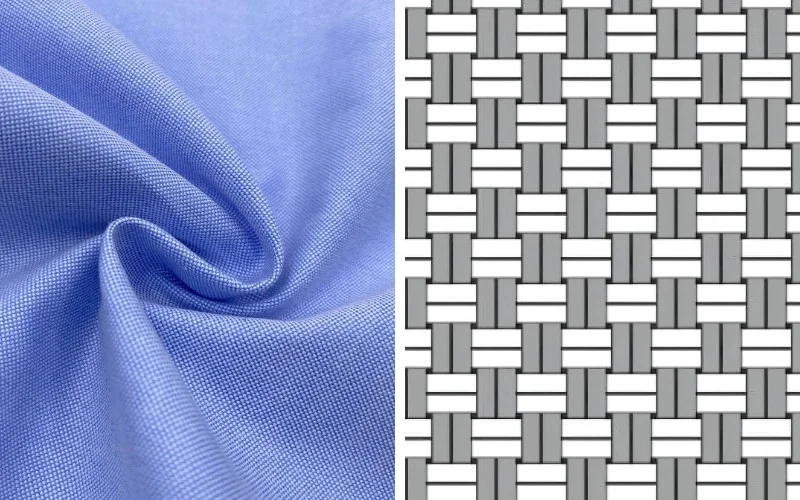
4. Different kinds of oxford fabric
While all Oxford fabrics share the basic basket weave, there are a few common variations. These differ slightly in the thickness of the threads used, how they feel, and how they look.
4.1. Plain oxford: the classic
This is the most standard and often heavier type of Oxford. It uses relatively thicker yarns. It has the most noticeable basket weave texture and feels quite sturdy, sometimes a bit rugged before it’s washed a few times. Plain Oxford is the standard, sturdy type often used for casual shirts (like the famous “Oxford cloth button-down” or OCBD shirts), workwear, and other durable items.
4.2. Pinpoint oxford: a finer touch
Pinpoint Oxford is a more refined version. It’s made with finer yarns compared to Plain Oxford. The basket weave is still present but appears smaller and more delicate, creating a tiny “pinpoint” dot effect.
It feels softer and smoother than Plain Oxford. Pinpoint Oxford uses thinner threads, making it a popular choice for dressier shirts or business casual shirts, offering a balance of durability and a more formal appearance.
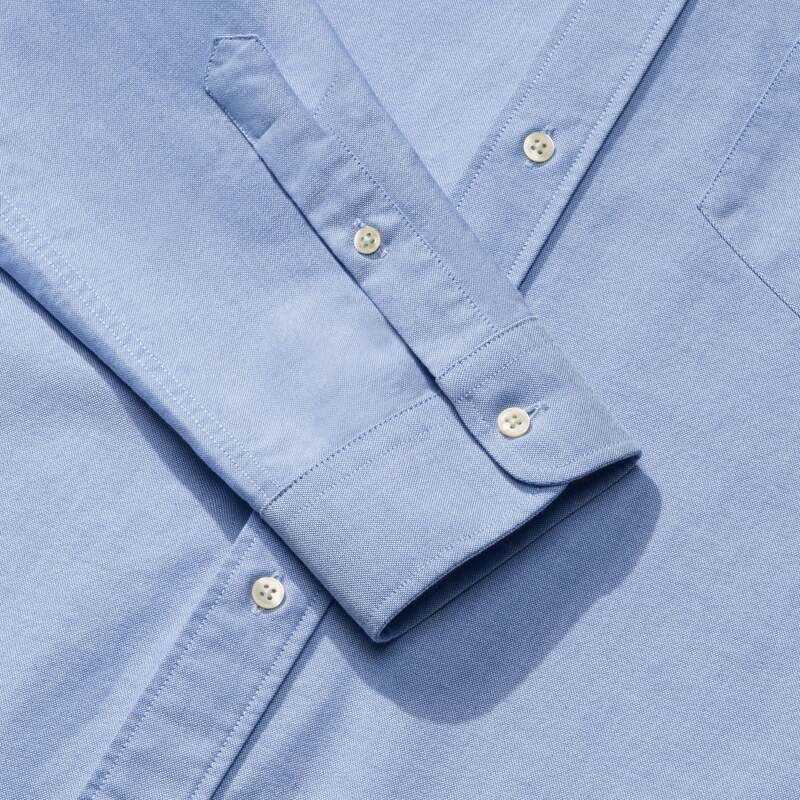
4.3. Royal oxford: a bit shinier
Royal Oxford is generally considered the most formal and luxurious type of Oxford. It’s made with very fine, high-quality, and often tightly spun yarns. The weave is more complex, resulting in a fabric that looks smoother and has a distinct sheen or luster.
It feels very soft and silky. Royal Oxford is made with very fine threads, giving it a smooth, shiny look and a very soft feel, typically reserved for high-end dress shirts and formal wear.
5. Common uses of oxford fabric
Because Oxford fabric is strong, comfortable (especially the cotton ones), and versatile, it’s used for many different products. You’ve likely seen or even own items made from it.
5.1. Shirts
This is the most iconic use of Oxford fabric. Oxford shirts, especially the Oxford Cloth Button-Down (OCBD), are a staple in many wardrobes. It’s popular for:
- Casual button-down shirts
- More formal dress shirts (often Pinpoint or Royal Oxford varieties)
- Some school or work uniform shirts
Its blend of comfort, durability, and smart appearance are key reasons for its popularity in shirting. It holds its shape well and looks neat.
5.2. Bags and backpacks
Oxford fabric’s inherent strength and resistance to wear make it a good choice for various bags. You’ll often find it used for:
- Backpacks (especially for daily use or school)
- Tote bags
- Duffel bags
- Messenger bags
- Sometimes as linings for sturdier luggage
It can handle carrying weight and withstand the abrasion that bags often face. Heavier types of Oxford fabric, often made from polyester, are especially common for bags that need to be more water-resistant. Oxford fabric is great for bags and backpacks because it’s strong and can carry weight without tearing easily.
5.3. Other clothing: jackets, dresses, skirts
While less common than shirts, Oxford fabric is also used for other apparel items. Examples include:
- Lighter casual jackets
- Structured dresses and A-line skirts
- Shorts
- Some types of trousers that require a bit of body and durability
Its structure lends itself well to garments that need to hold their shape and last. It’s also used for some jackets, dresses, and skirts that need to be durable and hold their form.
5.4. Home items: sometimes for aprons, light upholstery, bedding
The durability of Oxford fabric extends its use to some household items as well. You might see it in:
- Hard-wearing aprons
- Cushion covers
- Light upholstery (like chair seat covers)
- Some types of sturdy bed linens (like duvet covers or pillowcases, though less common than other materials for bedding)
- Laundry bags
Strength and washability are key here. Its strength makes it good for durable home items like aprons or sturdy laundry bags.
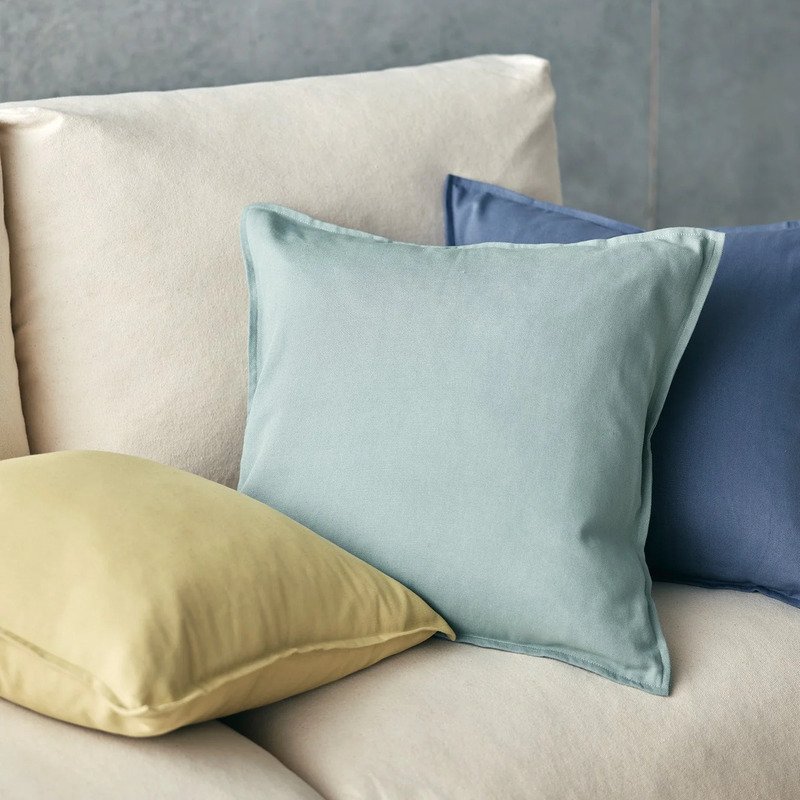
6. Taking care of your oxford fabric items
Oxford fabric is generally robust and easy to care for. Following a few simple tips will help maintain its appearance and ensure it lasts a long time. Crucially, always check the garment’s care label first. Specific blends or finishes on the fabric might have different washing or drying requirements.
6.1. Washing
- Check the Label: This is the most important step!
- Machine Washing: Usually, cotton Oxford fabric items can be machine washed.
- Water Temperature: It’s best to use cool or lukewarm water (around 30-40°C or 86-104°F). Hot water can lead to more shrinkage (especially for 100% cotton) and can cause colors to fade faster over time.
- Detergent: Use a mild laundry detergent. Avoid harsh chemicals or bleach, unless the item is white and the care label says it’s okay.
- Loading: Don’t overcrowd the washing machine. This helps items get cleaner and can reduce wrinkling.
6.2. Drying
- Check the Label: Again, see what the label recommends.
- Tumble Drying: If you use a tumble dryer, choose a low or medium heat setting. High heat can cause shrinkage and weaken the fabric fibers over time. It’s a good idea to remove items promptly when they are just slightly damp or fully dry to minimize wrinkling.
- Air Drying: Air drying is often the best and gentlest method for Oxford fabric. Hang shirts on hangers or lay items flat to dry. This helps prevent shrinkage and can reduce the need for ironing. If drying outside, try to avoid direct, harsh sunlight on colored items for long periods, as this can cause fading.
6.3. Ironing
- Wrinkling: Oxford fabric, especially 100% cotton versions, is prone to wrinkling after washing.
- Best Practice: It’s easiest to iron Oxford fabric while it is still slightly damp. If it’s completely dry, use the steam setting on your iron or lightly spritz the fabric with water before ironing.
- Iron Setting: Use the appropriate heat setting for cotton (usually medium to high). Check your iron’s guide and, if you’re unsure, test on a hidden area of the garment first. For blends, use a lower setting suitable for the most delicate fiber in the blend.
- Technique: Ironing on the reverse side can help protect the color and prevent any shine marks, especially on darker fabrics.
7. Pros and cons of oxford fabric
To help you decide if Oxford fabric is right for your needs or preferences, here’s a quick, balanced overview of its good points and some things to keep in mind.
7.1. Good things
- Durability: It’s very strong and long-lasting, resisting wear and tear well.
- Breathability & Comfort: Especially 100% cotton versions are breathable and feel comfortable against the skin.
- Versatility: It’s suitable for a wide range of items, from casual shirts and workwear to smart-casual apparel and sturdy accessories.
- Classic Appearance: It has a timeless, appealing look that rarely goes out of style. It often looks smart even when worn casually.
- Softens with Age: Pure cotton Oxford fabric tends to get softer and more comfortable with repeated washing and wear.
- Good Value: It’s often considered good value for money because it lasts for a long time.
7.2. Things to keep in mind
- Prone to Wrinkling: Especially 100% cotton varieties; it usually requires ironing to look crisp and neat.
- Initial Texture: When new, it can feel somewhat stiff or rougher than finer fabrics. Plain Oxford is more textured than Pinpoint or Royal Oxford.
- Potential for Shrinkage: If not cared for properly, cotton Oxford fabric can shrink.
- Color fading: Like many dyed cotton fabrics, colors may gradually fade over time with repeated washing, especially if harsh detergents or very hot water are used.
8. Branding your oxford fabric products
8.1. Why good branding is important for your items
Good branding, which includes things like labels, tags, and packaging, makes your products look more professional and appealing to customers. It helps tell your brand’s story, communicates the quality of your items, provides essential information (like care instructions), and helps customers remember your brand for future purchases.
In short, good branding makes your Oxford fabric items look professional, shares your brand’s story, and provides useful info to customers.
8.2. Choosing labels for oxford fabric items
For apparel made from Oxford fabric, such as shirts or jackets, woven labels (a label made by weaving threads together, like on clothing necklines) are an excellent match. Their texture and durability complement the fabric well, conveying a sense of quality.
At Packlove, we often suggest damask woven labels for Oxford shirts because they offer fine detail and a premium feel that enhances the garment. They last as long as the shirt itself. Printed satin labels can also work, especially if a very soft label is desired or for intricate, colorful graphics.
8.3. Packaging for shipping or selling
If you’re selling your Oxford fabric items online or in stores, protective and presentable packaging is key. Poly mailers are a practical and lightweight option for shipping clothing items like Oxford shirts.
They offer good protection from moisture and dirt during transit. You might also consider recycled or recyclable poly mailer options if sustainability is important for your brand.
Hang tags (tags attached to a product, often with string) are more than just price tags. You can use them to:
- Share your brand’s story.
- Highlight key features of the product (e.g., “Made with 100% Premium Cotton Oxford Fabric,” or “Classic Basket Weave for Durability”).
- Provide detailed care instructions (very relevant for Oxford fabric, linking back to our care tips in Section VI).
- Mention any sustainable aspects if applicable.
Packlove can design and produce custom hang tags that reinforce your brand identity and give customers valuable information about their Oxford fabric garment, like “Gets Softer with Every Wash.” Hang tags can share your brand story, highlight the quality of the Oxford fabric, and give care instructions. Packlove designs custom hang tags to help your products stand out.
9. Oxford fabric FAQs
9.1 Is Oxford fabric waterproof?
Generally, no. Standard Oxford fabric, especially the cotton type commonly used for shirts, is not waterproof; it will absorb water. However, some heavier-duty Oxford fabrics, often made with synthetic materials like polyester or nylon (you might see names like “Oxford Polyester 600D”), can be specially treated with coatings to make them water-resistant or even waterproof. These types are typically used for outdoor gear, bags, or covers, not standard apparel. So, regular Oxford cloth for shirts isn’t waterproof. Special types for outdoor gear can be.
9.2 Is Oxford fabric natural or man-made?
It can be either, or a mix! Classic Oxford fabric is traditionally made from 100% natural cotton. However, today, you can also find Oxford fabric made from man-made (synthetic) fibers like polyester or nylon.
It’s also common to find blends of cotton and synthetic fibers. The material affects its properties; for example, cotton Oxford is more breathable, while polyester Oxford might be more water-resistant or wrinkle-resistant. So, it can be natural (cotton), man-made (polyester), or a blend.
9.3 How strong is Oxford fabric?
Oxford fabric is known for being very strong and durable. Its characteristic basket weave structure, where multiple threads are bundled and woven together, contributes significantly to its toughness and resistance to tearing and abrasion. This makes it last a long time, even with frequent use and washing. It’s very strong! Its special weave makes it tough and long-lasting.
9.4 Can I use Oxford fabric for outdoor things?
Standard cotton Oxford fabric (like that used for shirts) is not ideal for prolonged outdoor exposure because it’s not usually waterproof or resistant to UV rays from the sun. However, there are specific types of Oxford fabric, usually made from polyester or nylon and often with a protective coating (like PU or PVC), that are designed for outdoor applications.
These are used for things like backpacks, outdoor furniture covers, awnings, and some types of tents because they are more durable against weather elements. Always check the specific fabric type if you need it for outdoor use. Shirt Oxford isn’t best for outdoors. Special, treated Oxford fabrics are used for outdoor gear.
9.5 Is Oxford fabric expensive?
The price of Oxford fabric can vary. Factors that influence the cost include the material (100% cotton, especially high-quality types like Royal Oxford, tends to be more expensive than polyester blends), the fineness of the yarn used, and the brand selling the fabric or garment.
Generally, Oxford fabric is considered to offer good value for its durability and quality. This means it might not always be the cheapest option available, but it often lasts longer, making it a worthwhile investment in the long run. So, the price varies, but it’s generally good value because it lasts.
Read more:
Oxford fabric has been around for a long time, and there are good reasons why it’s still so popular. Its core strengths are its exceptional durability – it’s built to last through plenty of wear and washing. It’s also incredibly versatile, suitable for everything from casual everyday shirts to sturdy bags and smart workwear. And, of course, it has that timeless, classic aesthetic that doesn’t easily go out of style.
These qualities ensure Oxford fabric remains a consistently popular and trusted choice for both consumers and brands across many different applications. It offers a great blend of practicality and style, making it a valuable and enduring textile in the world of fashion and beyond.






















